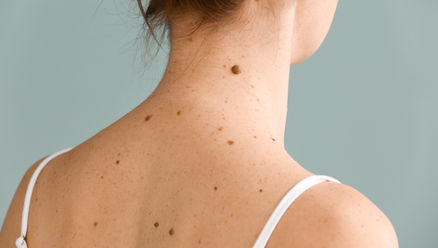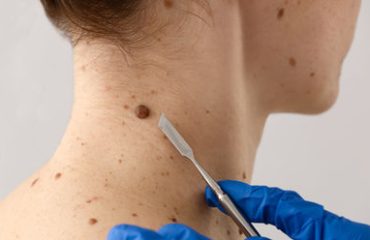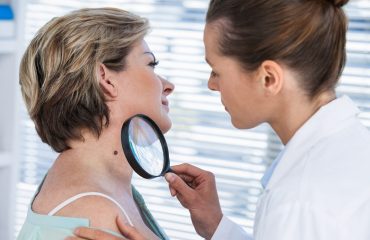Most people have a few moles, and we don’t think much of them. So how can you tell if it’s a just mole or something more serious like skin cancer? That’s where a mole removal specialist in Ellicott City comes in. Danielle LeClair NP has years of experience with moles and mole removal. She will evaluate your moles or any other dermatology concerns you have and determine the best course of treatment for you. When it comes to suspicious moles, it is better to be safe than sorry.
What Are Moles?
Moles (also called nevi) are normal skin growths made of clusters of melanocytes—cells in our skin that give it color. The job of melanocytes is to produce melanin, a pigment found in skin which protects it from the harmful effects of ultraviolet light. Moles can have many shapes and sizes and can appear almost anywhere on the body. Typical moles usually form before the age of 40 appearing very slowly on your skin.
What Causes Moles To Suddenly Appear?
It’s unclear exactly how or why moles suddenly appear on our skin, but we think genetics and sun exposure play a role in this process. This is why it is so important to be aware of any family history of abnormal moles or melanoma and to protect your skin from ultraviolet light.
How Can I Tell If A Mole Is Suspicious?
When we talk about suspicious or abnormal moles, we often refer to the ABCDE checklist.
ASYMMETRY: one half of the mole doesn’t match the other half
BORDER: the edges of the mole are notched or ragged
COLOR: the mole is varied shades of tan, black, and brown
DIAMETER: a mole that is greater than 6 millimeters in size
EVOLUTION: change in size, shape, shade of color, itching, or bleeding in a mole
If you have any moles with these symptoms, you need to see a mole removal specialist in Ellicott City as soon as possible. These symptoms are an indication that there may a problem with your mole, like it might melanoma.
How Are Moles Assessed ?
Before a mole removal procedure can be done, a visual inspection of the mole is performed. Moles are often assessed by a dermatologist using a dermatoscope, a handheld device that lights and magnifies moles to help dermatologists see moles in more detail. After visual inspection, your mole removal specialist will discuss your treatment options with you, including medical and cosmetic mole removal procedures available.
How To Protect Yourself
- Protect your skin from sun exposure. Excessive exposure to ultraviolet light from the sun or tanning beds increases your risk of developing moles and skin cancer.
- Perform month self-skin examinations.
- If you see a suspicious mole on your skin, make an appointment with a dermatology specialist
Having your moles evaluated by a dermatology professional is the best step you can take in determining the health of your moles. Schedule your mole check today by calling 410-870-8225.




